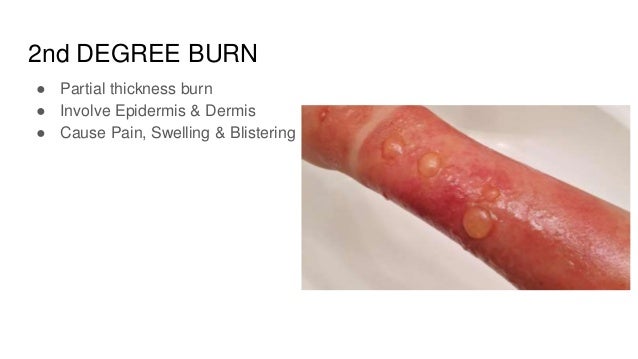What Does A Nair Burn Look Like

Hair removal is a common practice, and various methods exist, each with its own set of benefits and risks. Chemical depilatories, such as Nair, offer a convenient alternative to shaving or waxing, but they also carry the potential for skin irritation and, in some cases, chemical burns. Understanding what a Nair burn looks like, how it happens, and how to treat it is crucial for anyone considering or currently using this type of product.
This article will explore the characteristics of Nair burns, differentiating them from simple irritation, and provide guidance on prevention and treatment. It aims to offer factual information and practical advice to help individuals use chemical depilatories safely and minimize the risk of adverse reactions.
Understanding Chemical Depilation and Its Risks
Chemical depilatories like Nair work by using chemicals to dissolve the hair shaft at the skin's surface. These products typically contain ingredients such as thioglycolic acid salts, which break down the protein structure of hair.
While effective, these chemicals can also irritate the skin if not used correctly. The severity of the reaction can range from mild redness to a full-blown chemical burn.
What Does a Nair Burn Look Like?
Differentiating a Nair burn from simple skin irritation is crucial for determining the appropriate course of action. Mild irritation typically presents as redness, itching, or a slight stinging sensation that resolves within a few hours.
A chemical burn, however, is more severe and exhibits distinct characteristics. The key indicators of a Nair burn include intense redness, inflammation, and blistering.
The affected area may also appear raw or ulcerated. Pain is often significantly more intense than with simple irritation, and the burn may feel hot to the touch.
In some cases, swelling and discoloration of the skin may also occur. The burn might evolve over time, with blisters potentially rupturing and forming scabs.
Causes and Contributing Factors
Several factors can increase the likelihood of experiencing a Nair burn. One of the most common causes is leaving the product on the skin for longer than the recommended time.
Sensitive skin is also a significant contributing factor. Individuals with conditions like eczema or psoriasis may be more prone to adverse reactions.
Using Nair on areas with broken skin or recent abrasions can further increase the risk of burns. Combining chemical depilation with other potentially irritating treatments, such as exfoliating scrubs or tanning beds, can also exacerbate the problem.
Prevention and Treatment
Preventing Nair burns is always preferable to treating them. Before using any chemical depilatory, it’s essential to perform a patch test.
Apply a small amount of the product to a discreet area of skin, such as the inside of your wrist or behind your ear, and wait 24 to 48 hours to observe any reaction. Always follow the product instructions carefully, paying close attention to the recommended application time.
Avoid using Nair on sensitive areas or broken skin. If you experience any burning or discomfort during use, immediately rinse the product off with cool water.
If a Nair burn does occur, prompt treatment is crucial to minimize damage and promote healing. Rinse the affected area thoroughly with cool water for at least 15 minutes to remove any remaining chemicals.
Apply a cool compress to help reduce inflammation and pain. Over-the-counter pain relievers, such as ibuprofen or acetaminophen, can also help manage discomfort.
For mild burns, a soothing lotion or cream, such as aloe vera or calamine lotion, can provide relief. Avoid using harsh soaps or scrubbing the affected area.
If the burn is severe, with blistering, ulceration, or intense pain, seek medical attention immediately. A doctor may prescribe topical antibiotics to prevent infection or stronger pain relievers to manage discomfort.
The Human Element
For many individuals, hair removal is a significant part of their grooming routine. The pursuit of smooth, hair-free skin can sometimes lead to unintended consequences, as was the case for Sarah Miller, a 28-year-old who shared her experience with a Nair burn online.
“I thought I was being careful, but I left it on just a minute too long,” she recounted. “The pain was excruciating, and I ended up with blisters all over my legs. It took weeks to heal.”
Miller's experience highlights the importance of caution and vigilance when using chemical depilatories. Her story serves as a cautionary tale, emphasizing the need to prioritize safety over convenience.
Conclusion
Nair burns, while often preventable, can be a painful and distressing experience. Understanding the signs of a burn, knowing how to prevent them, and being prepared to treat them effectively are crucial for anyone who uses chemical depilatories.
By following product instructions carefully, performing patch tests, and seeking medical attention when necessary, individuals can minimize the risk of adverse reactions and maintain healthy skin. Ultimately, informed choices and responsible use are key to a safe and effective hair removal routine.


















